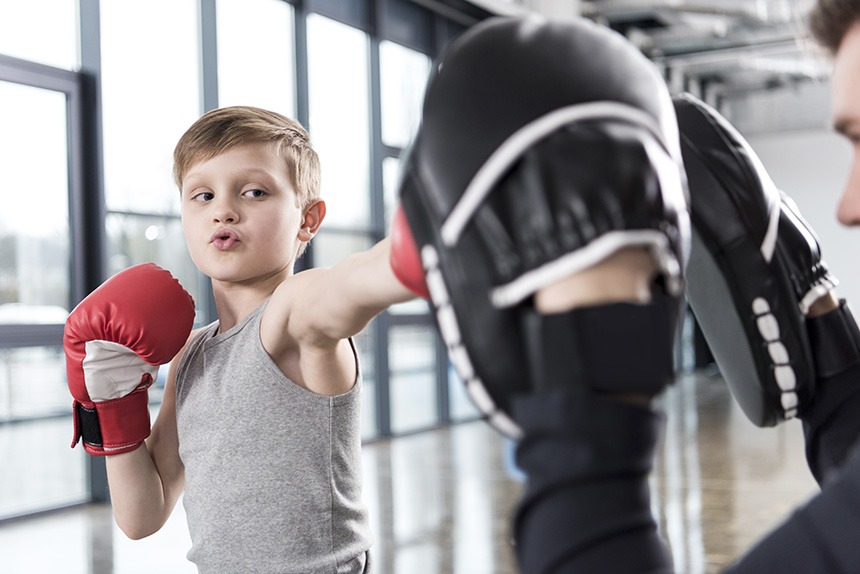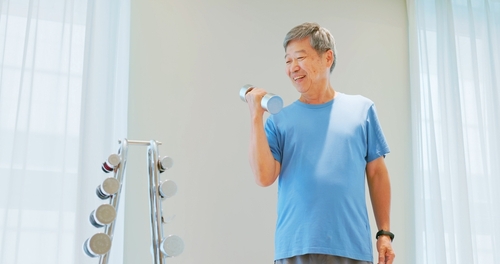
Parents perceive boxing as an adult sport. This is mainly due to the risks associated with boxing classes for adults. However, the broader picture of boxing for kids is much more than that. The fun fact is that boxing is one of the coolest martial arts you can enroll your kids in. Sadly, parents don’t look at it as a kids’ sport or consider it a martial art such as taekwondo or karate.
Actually, boxing has myriad benefits, which your child is missing out on.
Boxing isn’t as dangerous as people make it look. It’s important to find the best boxing classes in Dubai before you enroll your kid. That’s what decides whether it is safe or not. If your child gets their practice and training from qualified coaches and trainers, you don’t have to worry about it.
Once your child is enrolled, you’ll likely notice improvements in both their mental and physical well-being. What’s reassuring is that they’ll receive training from experienced professionals, alleviating any safety concerns. Your child’s physical strength will increase, and their ability to manage anger may also improve.
Furthermore, these classes instill valuable self-defense techniques, equipping your child with the skills to protect themselves when necessary. In this article, we’ll explore everything there is to know about kids’ boxing and how it can contribute to making your child a more solid and happier individual with a well-balanced mindset.
What Measures Ensure Safety in Kids’ Boxing?
As responsible parents, it’s of utmost importance to guarantee that your child is outfitted with safety gear that fits them snugly, including appropriately sized shoes and gloves, all maintained in good condition. Additionally, it’s crucial to have qualified trainers overseeing your child’s progress in a professional manner.
The most effective safety measures in kids’ boxing hinge on the diligence of trainers and parents alike. It remains imperative for parents to ensure their child’s safety equipment fits correctly and remains in optimal condition.
Furthermore, the presence of qualified trainers who can expertly supervise your child adds an additional layer of safety to their training. These trainers should also thoroughly instruct your child on how to utilize safety equipment to protect themselves effectively during their training sessions.
Plus, trainers and parents should talk to their children personally and privately to explain and let them know they can share if anything feels unsafe or uncomfortable during training.
How Do You Select The Right Boxing Gear?
Just like for adult boxing, kids, too, require similar equipment. But the only difference is that the measurements will be smaller. Let’s check out some of the kids’s boxing equipment below:
Gloves And Wraps
All types of boxers, including kids and teenagers, should use gloves and hand wraps to protect their wrists and hands from getting injured. Kids’ gloves are the same as adults’ but have a different scale. However, kids’ hand wraps are shorter and smaller to accommodate their hands. These gloves are categorized by weight, similar to adult gloves. But the weight is between 4-8 ounces and is lighter.
Boxing Bag
Parents must run the pros and cons before selecting a punching bag because certain bags are heavy while others are too complicated for beginners. This is why a standing bag with a low base would be ideal for kids. This will work for any kid, regardless of their height and age.
Boxing Shoes
Beginners don’t have to wear shoes, but there are benefits to wearing them. These shoes provide ankle support and enhance their grip. Some parents prefer offering fitting boxing shoes for their kids’ safety, while some believe shoes can wait for some time.
What Are The Creative Boxing Drills For Kids?
Shadow sparring
This is a prominent boxing training for kids because it helps them gain balance and self-control. There are footwork and fast movements involved in learning boxing, so it trains your child to exert energy per move, making them steady on their feet. This particular move has so much power if trained right.
One-legged boxing
Boxing isn’t only a great sport but a fun activity kids might love engaging in. One such step kids love to do is one-legged boxing. This is a way of balancing oneself in one leg while the opponent would do the same. The one who loses balance and sets their leg on the floor is considered the loser. This is actually a good trick to break the ice in a group, especially if the kids don’t know each other.
The heavy bag
This particular movement differs for adults because they train this intensely while kids don’t. For kids, this is practiced in order to improve endurance while handling their expression and aggression when sessions or learning don’t go their way. This is more like an exercise to make your kids feel good about letting out all the frustration.
The trainer will simply place the heavy bag somewhere at a safe distance. Then, the kids will be requested to hit it as hard and far as possible. Although this will help them release their pent-up emotions, the real benefit of this activity is strength training and building the core’s strength.
Paper mouth
This activity is fun for kids but goes beyond just offering fun. It enhances your kid’s agility. A folded paper will be placed on your child’s mouth. It’ll be partially out, which means, in a way, letting the opponent take it. The opponent’s goal is to take the paper from your child’s mouth using their hand but in the cleanest way possible.
The opponent has the chance to defend and attack using certain moves to get the paper, but the one with the paper must move their head and use footwork to escape.
The sock drill
Footwork defense can be learned through sock drills. This is a fun game where both the players will have a sock sticking out from the top of their t-shirts. The aim is to steal the sock of their opponent while defending theirs.
This particular move helps your kid learn facial defense and upper body movements and sharpen their skills in using certain attacks on different areas of the body.
Advantages of Engaging Kids In Boxing
There are many benefits to enrolling your kids in boxing. It can positively nurture their physical, mental, and social development. If you can find boxing training personal trainers who are patient enough to help your kid learn boxing skills, you encounter how developed your child’s physical, social, and mental skills are.
Some of the common benefits of boxing training your kids are:
Enhanced self-confidence: Boxing is all about social benefits, mainly by offering self-confidence to boxers. When kids develop confidence, they will be able to manage themselves in a crowd by helping others and making friends by interacting with them socially. Through boxing, kids let out their frustration and restlessness piled up throughout the day. On top of all, the self-defense skill gives them the confidence to feel better inside out.
Improve hand-eye coordination: Kids become attentive to their hand-eye coordination when they spend time boxing training because both attack and defense movements help them improve it. They also become cautious about their body movements.
This is a good skill when the child is growing up because most kids don’t know their own strengths. When kids are given a safe space to try what they can do and see how far they can reach, it allows them to test and understand their capabilities, increasing bodily awareness.
Trains to be disciplined and respectful: Boxing disciplines your kids and helps them understand how to carry themselves respectfully. It builds character, enhances mental focus, and offers an outlet to vent and become emotionally strong. These are some of the important lessons worth teaching at a young age.
Improves agility and fitness: This physical workout deals with cardio and other agility-related components. Boxing also offers balance, fights obesity, and strengthens cardiovascular abilities.
What’s The Ideal Age For Kids To Start Boxing?
There’s no specific age rule when it comes to starting your child’s journey into boxing. If your child expresses genuine interest, you can consider enrolling them in boxing classes. However, it’s worth noting that certain boxing techniques, like punching bags, demand a higher level of coordination and physical strength. Typically, kids under the age of 7 may find it challenging to master these techniques effectively.
Furthermore, finding boxing gloves that fit very young children can be quite tricky. That’s where shadowboxing comes into play as an excellent alternative for the little ones.
While it’s generally recommended to start formal boxing training around the age of 8, this isn’t a hard-and-fast rule. The right time to begin can vary depending on your child’s readiness and the expertise of the trainer you choose.
On the positive side, there are numerous benefits to introducing boxing at a young age. It’s a physically demanding sport that can help children burn off excess energy, manage their emotions, and cultivate patience. Additionally, boxing training can instill valuable qualities like discipline and self-control in kids.
Many psychological aggression and effects can be dealt with with boxing training, which is one reason to start young. However, the bottom line is that different kids adapt differently, so some might start early while others need time to learn.
Top 3 Youth Boxing Categories
When you’re looking for a boxing gym for your kid, check the types of classes they have for kids. There are three main categories based on the age group, such as:
Tiny Boxers: 3 – 4-year-olds
This is the category where the sport is made fun with non-contact, enjoyable games. The kids enrolled in this category will be taught fitness and boxing techniques. Parents can join by holding kick shields and pads to support and motivate the kids.
Little Boxers: 5 – 9-year-olds
Compared to kids in tiny boxers, this category will have experienced individuals. They will be divided based on their experience and age. This category will focus more on boxing techniques. Kids will be offered assignments, grades, and feedback. They are also encouraged to track what they have improved and how they can reach specific goals.
Junior Boxers: 10 – 16-year-olds
This is where technical boxing training happens. Boxers will be taught defense, counters, and other techniques, leading toward practical situations. They will be involved in sparring games.
Light sparring will be introduced for 12-13-year-olds, but only after the trainer receives the consent form signed by the parents. The decision to spar is solely based on the individual’s willingness.
Is Boxing Safe For Kids?
Boxing has its own risks, just like any other sport. However, a child doesn’t grow up without injuries and scuffs. If you enroll your child in a reliable fitness center, you don’t have to worry about anything else. Once there is responsible training, everything else is assured.
As parents, you should offer enough rest, use high-quality equipment, avoid sparring until the child is ready, and, importantly, make sure the professional trainer is skilled enough to train your kid safely.
Is Boxing An Effective Self-Defense?
It is one of the best ways kids can learn to defend themselves. They will know the physical and mental aspects of defending themselves in trouble. Compared to other sports and martial arts, boxing teaches the most ordinary way to defend oneself.
During boxing training, kids will learn to slip, block, dodge punches, and do the footwork to keep their opponents away mainly because during punching training, they use their hands to give concise punches. Kids will also be taught about developing timing, understanding the distance, and how to keep their minds calm when things don’t go as they planned.
Over time, kids will learn to keep their emotions stable and be focused to make logical decisions.
Final Thoughts On The Fun And Educational Sport
Most parents don’t prefer boxing for their children because of its fierce nature. As you’ve read above, the benefits outweigh the cons regarding boxing training. Your child’s mental, social, and physical health can be improved through boxing. They learn self-defense techniques to protect themselves from real-life situations.
Most classes in boxing for kids only let them spar once they reach the recommended age. A child’s health and safety are the top priorities when it comes to boxing, and a reliable coach will oversee when they train.
However, this doesn’t mean there will not be any injuries. Of course, there will be. But with proper safety gear and measures, it’s possible to do boxing safely.
In fact, the boxing games you see on TV are very different from the gym’s training sessions. As parents, your best bet is to give boxing a go and see how it impacts your child’s overall health and lifestyle.




